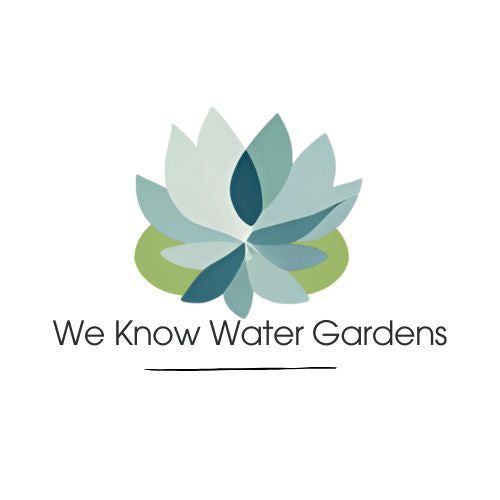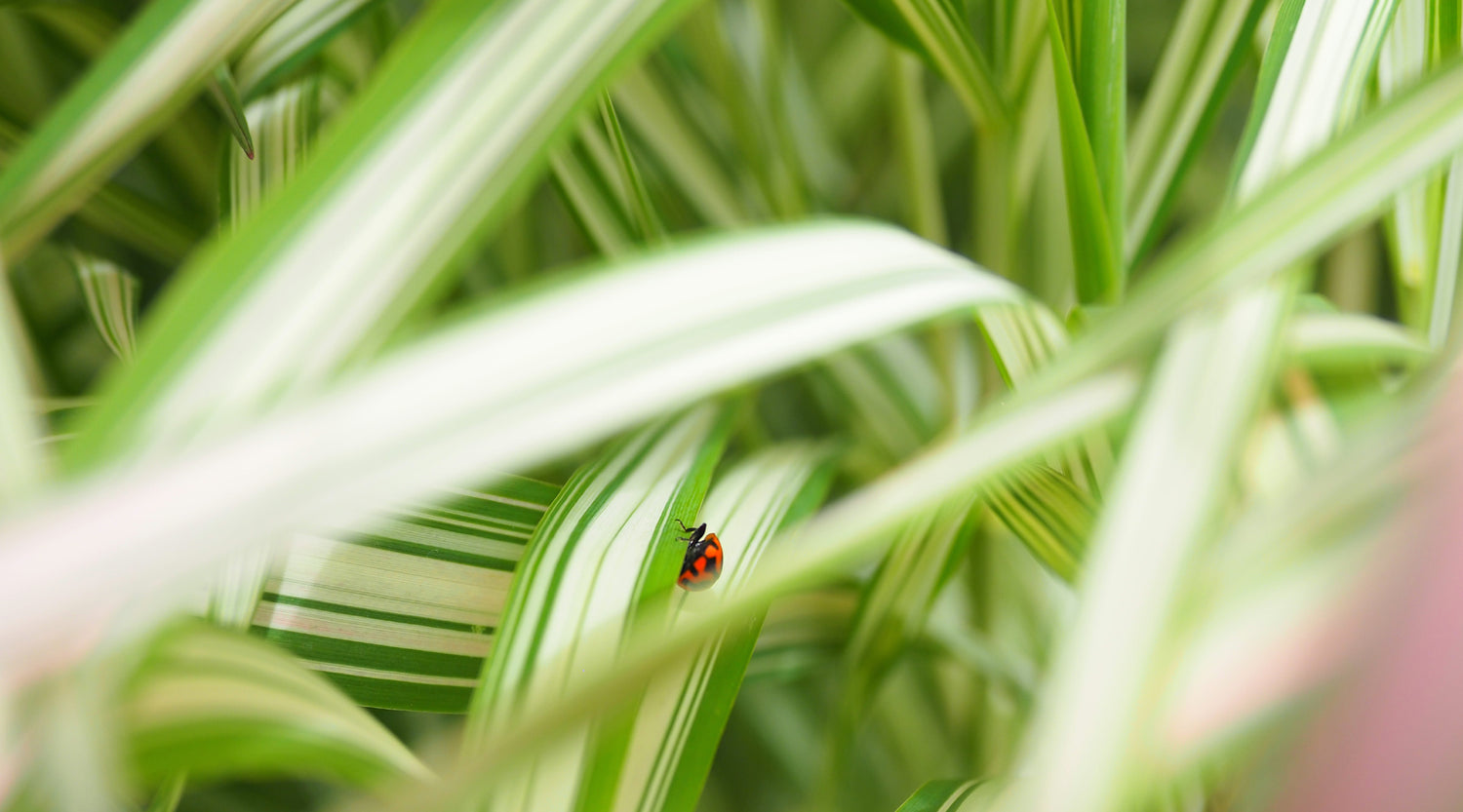Home
>
We Know Water Gardens Blog
>
Why you need to grow Marginal Pond Plants: Your Guide to the Best Options for Australian ponds and Water Gardens
Why you need to grow Marginal Pond Plants: Your Guide to the Best Options for Australian ponds and Water Gardens
on Apr 05, 2024

Growing marginal pond plants around the edge of your pond, ornamental water garden or dam goes well beyond looking good! This group of aquatic plants provide numerous benefits to your pond's ecosystem.
Here at We Know Water Gardens, we understand the importance of growing these key plants, which is why we have compiled a comprehensive guide to help you choose the best marginal plants to grow in your pond. From native Australian species to exotic varieties, we have all the information you need to make informed decisions.
There are many benefits of incorporating these plants into your pond, such as their ability to filter water, provide shelter for fish and wildlife, and create a balanced, natural environment.
Join us as we explore the endless possibilities that marginal pond plants offer and uncover the secrets to transforming your Australian pond or water garden into a captivating oasis.
Benefits of Growing Marginal Pond Plants
Marginal pond plants offer a range of benefits that make them a valuable addition to any Australian pond or water garden. One of the key advantages is their ability to filter water. These plants absorb excess nutrients, such as nitrogen and phosphorus, which can lead to algae blooms and poor water quality. Some of these marginal pond plants are effective at removing heavy metal pollutants from the water. Learn more about this in our article: Nature's Own Water Purifiers: Exploring the Numerous Benefits of Reeds, Grasses, and Rushes in Your Pond or Dam.
By incorporating marginal pond plants, you can improve water clarity and create a healthier environment for fish and other aquatic life.
Additionally, marginal pond plants provide valuable shelter for our native frogs, fish and wildlife. The dense foliage and root systems of these plants offer hiding places and breeding grounds for various species. Fish can seek refuge from predators, while amphibians and insects can find safe spaces to lay their eggs and complete their life cycles. This biodiversity not only adds to the ecological value of your pond but also creates a more dynamic and visually appealing environment.
Furthermore, marginal pond plants contribute to the overall aesthetics of your water garden. With their vibrant colors and unique textures, these plants can transform a plain pond into a stunning focal point and blur any unsightly pond edging that you want to hide! Whether you prefer the delicate blooms of water irises or the architectural beauty of reeds and grasses, there are endless options to suit your personal taste and style. The visual appeal of marginal pond plants adds a sense of tranquility and natural beauty to your outdoor space, making it a more inviting and enjoyable place to spend time.
Types of Marginal Pond Plants Suitable for Australian Ponds
When it comes to choosing marginal pond plants for your Australian pond, it's important to consider the specific conditions of your water garden. Different species have different requirements in terms of sunlight, water depth, and soil type. By selecting plants that are well-suited to your pond's environment, you can ensure their success and maximize their beneficial effects.
Native Australian species are a popular choice for pond owners who want to create a more authentic and sustainable ecosystem. These plants have evolved to thrive in our native climate and are well-adapted to the conditions found in Australian ponds. Some common native species include:
Frog Grass (Carex fascicularis)
Knobby Club Rush (Ficinia Nodosa)
These plants not only provide habitat for native wildlife but also help maintain the balance of the ecosystem. The lower growing native species also assist with stabilising banks and edges of natural ponds. They disguise unsightly edges with their ground cover form.
If you're looking to add a touch of exotic flair to your water garden, there are also many non-native options available. These plants can bring a splash of colour and unique characteristics to your pond. Some popular choices include:
Dwarf Papyrus (Cyperus papyrus nana)
Golden Sweet flag (Acorus gramineus ogon)
Gardeners Garters (Phalaris arundinacea)
Best Marginal Pond Plants for Australian Water Gardens
Now that you have an understanding of the benefits of marginal pond plants and the different types available, it's time to explore the best options specifically for Australian water gardens. Australia is home to a diverse range of climates and habitats, which means there are plants suited to various regions and conditions. Here are some top choices for Australian water gardens:
-
The Dwarf Papyrus (Cyperus papyrus nana) stands as a timeless
 favourite among marginal pond plants. Thriving in perennial fashion, it flourishes under sunny, moist conditions, accommodating water levels up to 5cm above its base. Reaching heights of up to 60cm, this plant forms clumps that gradually expand through rhizomes, spreading along marshy areas of the pond or within a container.
favourite among marginal pond plants. Thriving in perennial fashion, it flourishes under sunny, moist conditions, accommodating water levels up to 5cm above its base. Reaching heights of up to 60cm, this plant forms clumps that gradually expand through rhizomes, spreading along marshy areas of the pond or within a container. - Gardeners Garters (Phalaris arundinacea) is a fast growing variegated pond plant that makes a feature of pond margins. Perfect for attracting frogs to your pond.
- Frog Grass (Carex fascicularis) as the name suggest, this small Australian native pond plant will become a mecca for attracting frogs! It will grow to 60-70cm in height and develops a soft flowers in spring.
-
Water Iris (Lake Ouachita) is a classic marginal pond plant that will thrive around the ponds margins. The rhizomes help to stabilise natural watercourses at the edge of ponds or dams. This classic Louisiana swamp iris can grow to 1 meter in height and has a striking blue flower.
-
Swamp Mazus (Mazus pumilio) will grow easily around the boggy
 pond margins. If you are looking for a traditional, classic style of water garden this will give you that look. A great choice to hide pond edges with an English cottage garden style of flower every spring to summer. This plant is one of our favourites!
pond margins. If you are looking for a traditional, classic style of water garden this will give you that look. A great choice to hide pond edges with an English cottage garden style of flower every spring to summer. This plant is one of our favourites!
These are just a few examples of the many options available for Australian water gardens. When selecting plants, consider factors such as the size of your pond, water depth, and the overall design aesthetic you wish to achieve.
The Basics of Marginal Pond Plants
To fully appreciate the beauty and benefits of marginal pond plants, it's essential to understand their characteristics and how they differ from other aquatic plants. Marginal plants, as the name suggests, grow in the shallow areas along the edges or margins of ponds and water gardens. They thrive in the transition zone between water and land, where their roots are submerged but their foliage rises above the surface.
One of the key advantages of marginal plants is their ability to filter water. The extensive root systems of these plants act as natural filters, removing excess nutrients and pollutants from the water. This helps to maintain water clarity and prevent the growth of algae, creating a healthier environment for both plants and wildlife.
In addition to their filtration capabilities, marginal plants also provide valuable habitat and shelter for fish and wildlife. The dense foliage and intricate root systems offer protection and refuge for small aquatic creatures, helping to maintain a balanced ecosystem. Birds and insects are also attracted to these plants, adding an extra layer of biodiversity to your pond or water garden.
© weknowwatergardens 2024
Share

